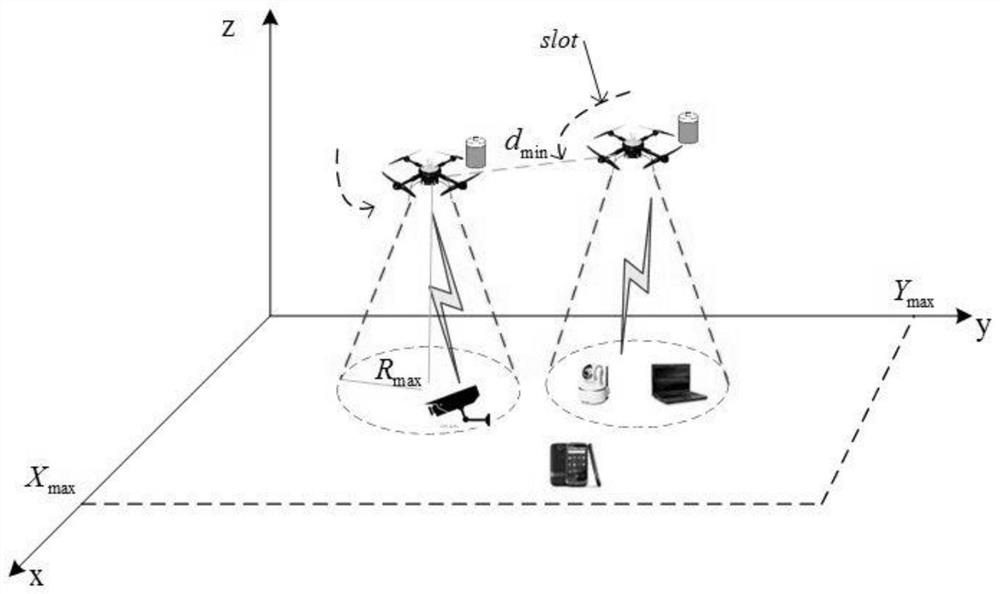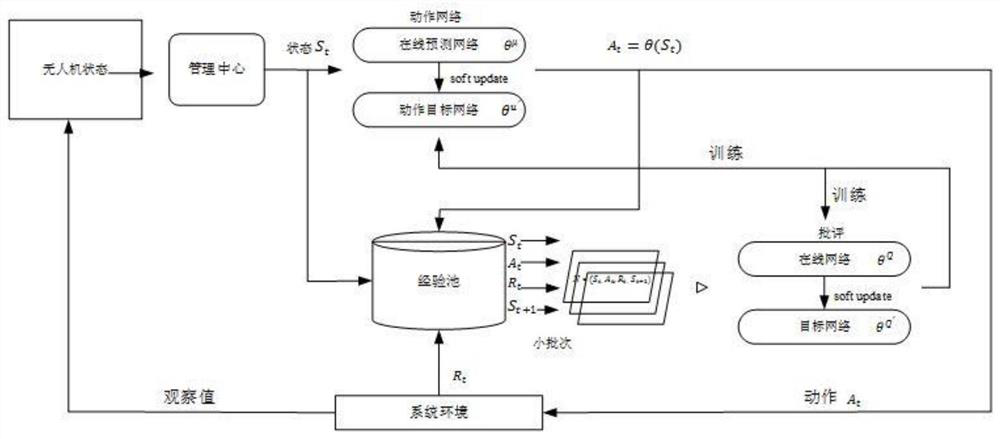Multi-unmanned aerial vehicle task unloading and resource allocation method for edge computing system
A multi-drone, edge computing technology, applied in resource allocation, computing, transmission systems, etc., can solve problems such as limited number, high cost of drones, and unrealistic
- Summary
- Abstract
- Description
- Claims
- Application Information
AI Technical Summary
Problems solved by technology
Method used
Image
Examples
Embodiment 1
[0070] Such as figure 1 shown. It is a scene diagram of computing offloading and resource allocation for multi-UAV assisted IoT smart devices. There are M IoT smart devices distributed in the area in the figure, and K drones are used to assist ground IoT smart devices to process computing tasks. IoT smart The computing tasks generated by the device can be calculated locally or offloaded to the UAV with powerful computing and storage functions for processing. Because of the limited coverage and communication range of a single UAV, this embodiment considers the scenario of multiple UAVs. Considering that IoT smart devices are sensitive to the time delay of computing tasks and the energy consumption of the entire edge computing system, this embodiment takes computing time delay and system energy consumption as the main optimization goals, and system energy consumption mainly includes local computing of IoT smart devices Energy consumption, offload transmission energy consumptio...
PUM
 Login to View More
Login to View More Abstract
Description
Claims
Application Information
 Login to View More
Login to View More - R&D
- Intellectual Property
- Life Sciences
- Materials
- Tech Scout
- Unparalleled Data Quality
- Higher Quality Content
- 60% Fewer Hallucinations
Browse by: Latest US Patents, China's latest patents, Technical Efficacy Thesaurus, Application Domain, Technology Topic, Popular Technical Reports.
© 2025 PatSnap. All rights reserved.Legal|Privacy policy|Modern Slavery Act Transparency Statement|Sitemap|About US| Contact US: help@patsnap.com



